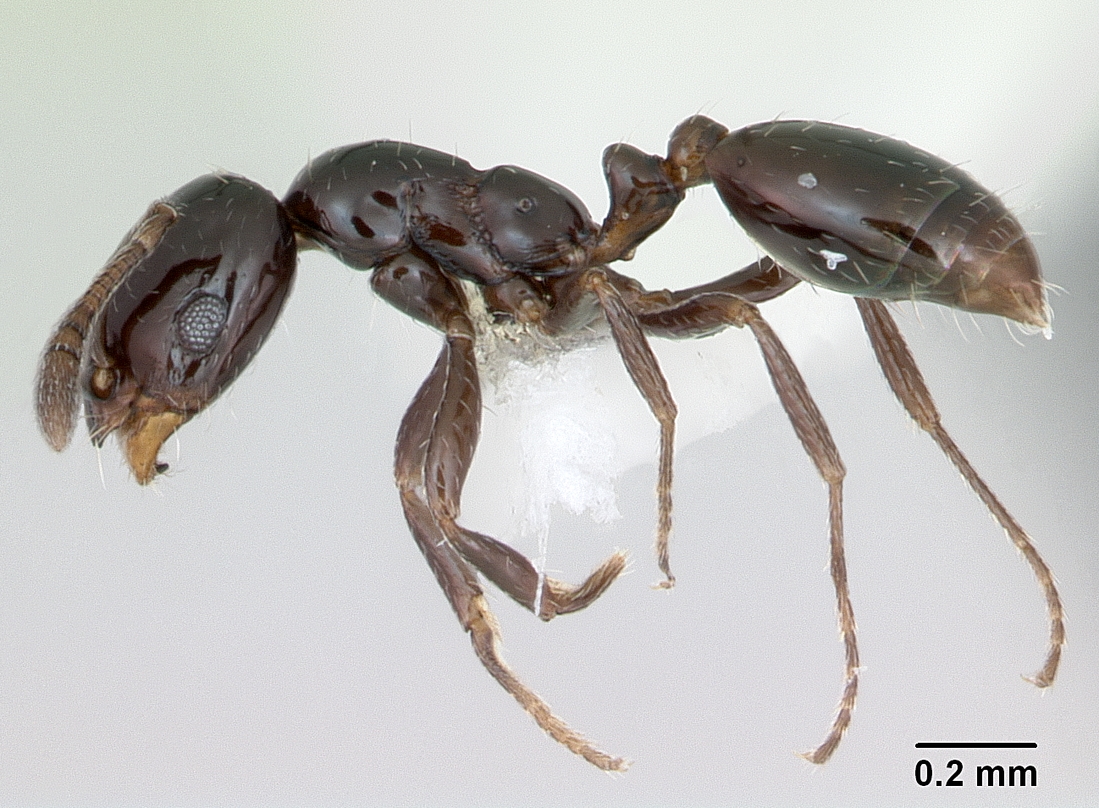Map Snapshot








18 Records
Status
Primarily found in open and semi-open habitats with exposed soil including fields, grassy meadows, and forest clearings, but there are also records from dry pine forests and woodlots. Smith (1979) notes that it sometimes invades houses or infests woodwork. (See Frye et al., 2014)
Seasonality Snapshot
Source: Wikipedia
| Little black ant | |
|---|---|

| |
| Scientific classification | |
| Domain: | Eukaryota |
| Kingdom: | Animalia |
| Phylum: | Arthropoda |
| Class: | Insecta |
| Order: | Hymenoptera |
| Family: | Formicidae |
| Subfamily: | Myrmicinae |
| Genus: | Monomorium |
| Species: | M. minimum
|
| Binomial name | |
| Monomorium minimum Buckley, (1866)
| |
The little black ant (Monomorium minimum) is a species of ant native to North America.[1] It is a shiny black color, the workers about 1 to 2 mm long and the queens 4 to 5 mm long. It is a monomorphic species, with only one caste of worker, and polygyne, meaning a nest may have more than one queen. A colony is usually moderately sized with only a few thousand workers.[citation needed]
Monomorium minimum are scavengers that will consume anything from bird droppings to dead insects. They are predators of codling moth larvae, and also of fall webworm.[2][3] Workers may forage in households, but nest in soil mounds. They harvest the honeydew of aphids such as the soybean aphid (Aphis glycines).[4]
During mid-summer the queens and males perform the nuptial flight, mating in midair. The males die shortly after. Each queen constructs a new nest, sheds its wings, and lays eggs. The development from egg to adult takes about a month.[citation needed]
In a laboratory setting queens were found to live about one year and workers about four months.[citation needed]

References
[edit]- ^ Monomorium minimum. AntWeb.
- ^ Tadic, M. (1957). The Biology of the Codling Moth as the Basis for Its Control. Univerzitet U Beogradu.
- ^ Warren, L. O.; Tadić, Milorad (1967). "The Fall Webworm, Hyphantria cunea, Its Distribution and Natural Enemies: A World List (Lepidoptera: Arctiidae)". Journal of the Kansas Entomological Society. 40 (2): 194–202. JSTOR 25083620.
- ^ Herbert, J. J. and D. J. Horn. (2008). Effect of ant attendance by Monomorium minimum (Buckley) (Hymenoptera: Formicidae) on predation and parasitism of the soybean aphid Aphis glycines Matsumura (Hemiptera: Aphididae). Environmental Entomology 37(5), 1258-63.
External links
[edit] Media related to Monomorium minimum at Wikimedia Commons
Media related to Monomorium minimum at Wikimedia Commons- Proceedings of the Entomological Society of Washington vol. 14-15. Entomological Society of Washington, 1913. pg 70.
- Monomorium minimum, the little black ant. The Ants of the Santa Barbara Museum of Natural History.
- Little Black Ant, Monomorium minimum. Center for Urban & Structural Entomology. Texas A&M University Agrilife Extension. 2010.




